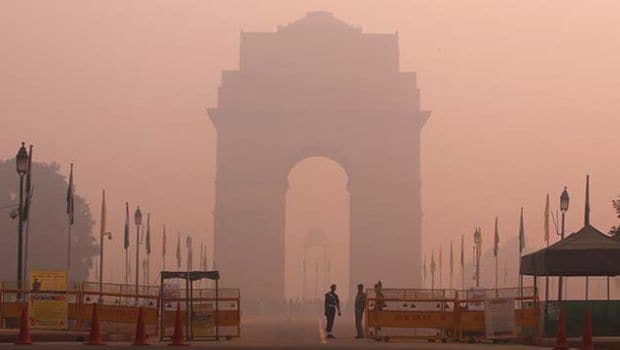Residents of the national capital have breathed "relatively better" quality air this season so far compared to last year.According to the Ministry of Earth Science's System of Air Quality and Weather Forecasting and Research (SAFAR), this is largely due to weather conditions that have not contributed towards accumulation of suspended particulates."The recent spell of rain has washed out the particulates. So the city is enjoying the season's best quality of air at this moment. January till now has been relatively better than last year," Gufran Beig, Project Director of SAFAR, said.
Beig said the jury was still out and one has to wait till the end of January and analyze a larger series of data to assess the major reasons behind the relative improvement.As per SAFAR, the day's average readings of PM 2.5 and PM 10 were 179 and 101 micrograms per cubic metre respectively. Perusal of CPCB (Central Pollution Control Board) show that there have been five days since December when air quality breached the "severe" category.The air quality index (24 hour running average) has been in the very poor category for around 29 days during this period while the rest has been poor.However, Beig said the city may witness a build up of pollutants in the coming days due to dipping temperature and calm wind movement.Prolonged exposure to severe category air may affect healthy people and seriously impact those with existing diseases while very poor category may cause respiratory illness.The 24-hour prescribed standards of PM 2.5 and PM 10 are 60 and 100 respectively and prolonged exposure to anything beyond that harms the respiratory system and may cause cardiac complications.Last year, the dense cover of grey haze shrouded Delhi for almost a week in early November, reminiscent of the 1952 Great Smog in London, that had plunged the city's air quality to the season's worst.The real-time readings of respirable pollutants PM 2.5 and PM 10 had breached the safe standards by over 17 times at many places. The hourly AQI (air quality index) of monitoring stations run by CPCB and SAFAR had remained 500 plus, beyond the maximum limit. Centre for Science and Environment (CSE) had said the spell of smog in Delhi was the worst in 17 years.(This story has not been edited by NDTV staff and is auto-generated from a syndicated feed.)
Beig said the jury was still out and one has to wait till the end of January and analyze a larger series of data to assess the major reasons behind the relative improvement.As per SAFAR, the day's average readings of PM 2.5 and PM 10 were 179 and 101 micrograms per cubic metre respectively. Perusal of CPCB (Central Pollution Control Board) show that there have been five days since December when air quality breached the "severe" category.The air quality index (24 hour running average) has been in the very poor category for around 29 days during this period while the rest has been poor.However, Beig said the city may witness a build up of pollutants in the coming days due to dipping temperature and calm wind movement.Prolonged exposure to severe category air may affect healthy people and seriously impact those with existing diseases while very poor category may cause respiratory illness.The 24-hour prescribed standards of PM 2.5 and PM 10 are 60 and 100 respectively and prolonged exposure to anything beyond that harms the respiratory system and may cause cardiac complications.Last year, the dense cover of grey haze shrouded Delhi for almost a week in early November, reminiscent of the 1952 Great Smog in London, that had plunged the city's air quality to the season's worst.The real-time readings of respirable pollutants PM 2.5 and PM 10 had breached the safe standards by over 17 times at many places. The hourly AQI (air quality index) of monitoring stations run by CPCB and SAFAR had remained 500 plus, beyond the maximum limit. Centre for Science and Environment (CSE) had said the spell of smog in Delhi was the worst in 17 years.(This story has not been edited by NDTV staff and is auto-generated from a syndicated feed.)
Advertisement







